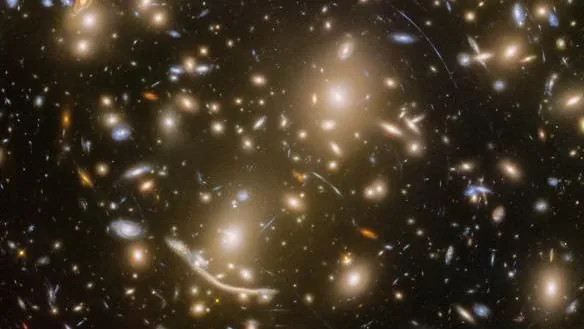
James Webb Space Telescope Makes Groundbreaking Discovery of 44 Stars in Distant Galaxy!
2025-01-07
Author: Noah
James Webb Space Telescope Makes Groundbreaking Discovery of 44 Stars in Distant Galaxy!
In an astonishing new chapter of astronomical discovery, the James Webb Space Telescope (JWST) has captured an unprecedented collection of 44 individual stars within a far-off galaxy, located halfway across the observable universe. This astonishing feat has been likened to trying to discern tiny dust grains on the moon using binoculars—once thought impossible!
Rogier Windhorst, an esteemed astronomer from Arizona State University and a key member of the discovery team, expressed his amazement at this finding, stating, "I never dreamed of Webb seeing them in such large numbers. Now, here we are observing these stars popping in and out of the images taken only a year apart, like fireflies in the night. Webb continues to amaze us all."
But this discovery isn't just a display of technological prowess; it opens the door to better understanding the mysterious behaviors of dark matter. The 44 stars—the largest group of individual stars ever observed in the distant universe—hail from a hidden galaxy, which has been nicknamed the "Dragon." This galaxy's light, warped into long tendrils by the gravitational lensing effects of the Abell 370 galaxy cluster, began its journey toward us roughly 6.5 billion years ago, a time when the universe was only half its current age.
Through meticulous analysis of the spectrum of these stars, researchers deduced that they are red supergiants, nearing the end of their life cycles. These stars are similar to Betelgeuse, the well-known giant star located in the Orion constellation, which is also approaching its final moments.
The Dragon itself is a mesmerizing blend of numerous duplicated images of a single background spiral galaxy, a cosmic mirage produced by its fortuitous positioning behind the densely packed Abell 370 galaxy cluster. Abell 370 is home to hundreds of galaxies, gravitationally bound and residing about 4 billion light-years away in the constellation Cetus. Remarkably, faint wisps of light from an additional hundred unseen galaxies linger within this cluster, which acts as a colossal cosmic lens. This lensing effect not only magnifies but distorts light from these distant galaxies, allowing astronomers to see them in striking detail.
Fengwu Sun, a postdoctoral scholar at the Center for Astrophysics | Harvard & Smithsonian and one of the study's co-authors, stumbled upon this extraordinary star collection while searching for a gravitationally lensed galaxy in images taken by JWST in 2022 and 2023. “When we processed the data, we realized that there were what appeared to be a lot of individual star points,” Sun remarked. “It was an exciting find because it was the first time we were able to see so many individual stars so far away.”
The ability of the JWST to locate such an impressive number of bright stars relied significantly on the fortuitous alignment of stars within Abell 370, which further augmented the brightness of the background stars in the hidden galaxy. A recent paper by Sun and his colleagues in *Nature Astronomy* elaborates on how fluctuations in the gravitational lensing landscape led to changes in the stars' brightness over time, causing them to "appear and disappear from image to image like a twinkling Christmas tree," as described by study co-author Nicholas Foo of Arizona State University.
This profound discovery not only represents a significant step forward in our understanding of stellar formations in the early universe but also amplifies the role of advanced technology in unraveling the mysteries of cosmology. As astronomers continue to decode the secrets of the cosmos, one can't help but wonder: what other revelations does the universe hold, waiting for us to uncover?



 Brasil (PT)
Brasil (PT)
 Canada (EN)
Canada (EN)
 Chile (ES)
Chile (ES)
 Česko (CS)
Česko (CS)
 대한민국 (KO)
대한민국 (KO)
 España (ES)
España (ES)
 France (FR)
France (FR)
 Hong Kong (EN)
Hong Kong (EN)
 Italia (IT)
Italia (IT)
 日本 (JA)
日本 (JA)
 Magyarország (HU)
Magyarország (HU)
 Norge (NO)
Norge (NO)
 Polska (PL)
Polska (PL)
 Schweiz (DE)
Schweiz (DE)
 Singapore (EN)
Singapore (EN)
 Sverige (SV)
Sverige (SV)
 Suomi (FI)
Suomi (FI)
 Türkiye (TR)
Türkiye (TR)
 الإمارات العربية المتحدة (AR)
الإمارات العربية المتحدة (AR)